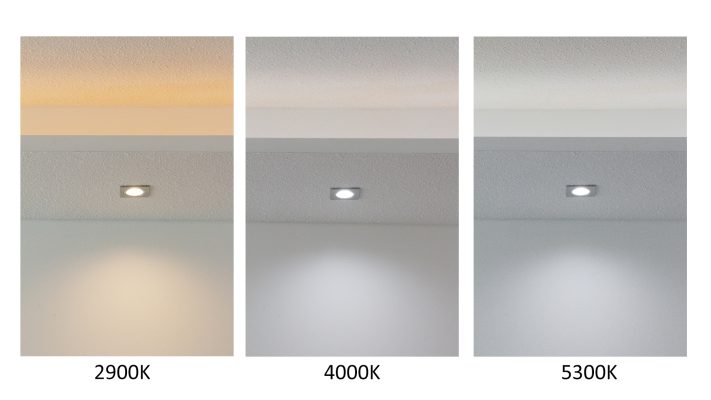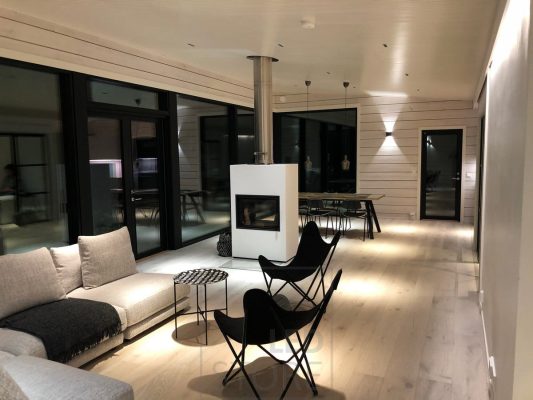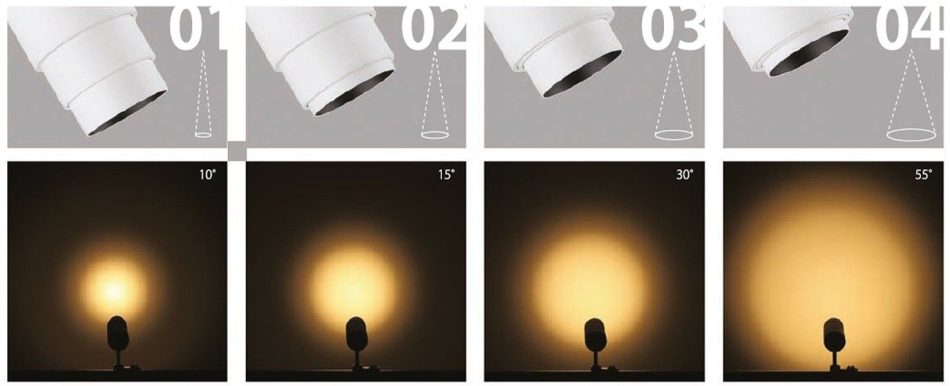In recent years, the lighting industry has undergone a major transformation with the arrival and rapid adoption of LED technology. LEDs have emerged as an energy-efficient and environmentally friendly alternative to traditional incandescent, halogen and fluorescent lighting. This change is mainly due to their superior performance in terms of energy consumption, lifespan, durability and versatility. The purpose of this article is to discuss the factors that influence the amount of light emitted by LED luminaires and to provide a comprehensive understanding of this cutting-edge technology.
Amount of light from Led luminaires
One important thing that sets LED lighting apart from its traditional counterparts is its ability to produce high quality light while consuming low power. However, some may find it challenging to navigate through the numerous technical specifications associated with these lights when choosing the most suitable option for their needs. This article aims to clarify various parameters that affect LED light output, such as colour temperature, colour rendering index (CRI), luminous efficacy and beam angle; so that readers have the necessary information to make informed decisions when selecting LED luminaires for different applications.
So, unfortunately, there is no direct answer to the question of the amount of light from Led lamps. But read on and you’ll understand why.
Understanding of LED lighting technology.
Advances in lighting technology have enabled more precise control of lighting intensity, improving both energy efficiency and user experience. Light-emitting diodes (LEDs) are at the forefront of this development, offering significant improvements in LED efficiency and energy savings compared to traditional incandescent and fluorescent lighting. LEDs work by using semiconductor materials that emit light when an electric current is applied, resulting in a highly efficient conversion of electrical energy into visible light.
LED lighting technology offers numerous advantages over traditional methods, such as longer lifetime, less heat generation and lower maintenance requirements. A key factor in providing these benefits is the ability to adjust the brightness level of LEDs by controlling the current flowing through the semiconductor materials. This flexibility allows optimal energy consumption according to specific needs while reducing wastage during low-use or daylight hours. In addition, advances in colour rendering properties have led to improved visual perception in LED lighting, enabling better colour resolution and improving overall visibility.
The proliferation of LED lighting solutions in various sectors has resulted in significant energy savings and reduced environmental impact. Users can tailor the level of lighting they want through advanced control mechanisms such as pulse width modulation (PWM), digital assignable lighting interface (DALI) or dimmer switches, and smart home systems (Zigbee) to increase the energy efficiency benefits of LED technology. As research continues on the fine-tuning of semiconductor materials and the optimisation of manufacturing processes for these cutting-edge devices, we can expect to see improvements in their performance and their contribution to a more sustainable future for society as a whole.
Factors affecting the amount of LED light and the number of lights
In the world of LED lighting technology, various factors affect the overall performance and production of these energy-efficient lighting solutions. Lumen output, colour temperature and beam angle are three critical parameters that determine the quality and functionality of LED lights in a variety of applications. A comprehensive understanding of these will facilitate informed decision-making on the optimal selection, installation and use of LED lighting systems in both commercial and residential applications.
Lumen volume
Evolving technology has significantly improved the lighting performance of LED luminaires, leading to significant lumen gains. Lumen efficiency is an important factor in evaluating the performance of LED lighting systems, as it represents the amount of visible light produced per watt consumed. In this article (opens in a new window) we will discuss the terms lumen and watt.
Higher lumen efficacy indicates that an LED luminaire produces more lumens with less energy consumption, which affects its overall efficiency and lifetime. In addition, advances in LED technology have led to improved thermal management and spectral optimisation, which can also have a positive impact on light output and extend the lifetime of these luminaires.
LED devices are known for their exceptional longevity; however, their lifetime can be affected by a variety of factors, such as temperature fluctuations or incorrect installation. Over time, and as the LED device continues to operate in less than ideal conditions, the lumen output may decrease over time – a phenomenon known as ‘light dimming’. To maintain optimal performance over the life of the LED device, it is important to address these factors and ensure proper thermal management during operation.
- Lumen efficiency: the ratio of visible light (lumens) per watt consumed (Lm/W); higher values indicate better performance.
- LED device lifetime: the period of operation of an LED luminaire before it reaches 70% of its initial lumen output (known as L70).
- Heat management: the techniques used in the design of LED luminaires and installation to control heat dissipation for optimal performance and longevity.
- Light degradation: a gradual decrease in the luminance flux experienced by LEDs over their lifetime, due to factors such as temperature changes or prolonged use.
Colour temperature
Colour temperature is a key factor in the perception of the warmth or coolness of the light produced by luminaires and thus their suitability for different uses and environments. Colour temperature is measured in Kelvin (K) and refers to a specific point in the colour spectrum that corresponds to the hue produced by light. Lower Kelvin measurements indicate a warmer, more yellowish light, while higher values represent cooler, bluish tones. The choice of colour temperature depends on factors such as intended use, desired ambience and potential impact on human well-being.

Understanding the different colour temperatures can help you choose the right LED lighting solutions for different environments. To illustrate this, consider the following table showing the common colour temperature ranges and their associated properties:
| Colour temperature (K) | Description | Typical applications |
| 2700-3000 | Warm white | Living environments |
| 3500-4100 | Neutral white | Offices, retail premises |
| 5000-6500 | Cool white/daylight | Industrial sites, outdoor areas |
The choice of the appropriate colour temperature should take into account both functional requirements and aesthetic preferences. For example, warm white light is often used to create a cosy atmosphere in residential areas by resembling the light of incandescent light bulbs. On the other hand, cool white or daylight LEDs offer better visibility and are recommended for task-oriented spaces such as workshops or outdoor areas where accurate colour perception is important. Ultimately, understanding the Kelvin measurement system will allow you to make better-informed decisions when choosing LED lighting solutions tailored to specific needs and preferences.
Opening angle
The angle of light is another important factor when choosing lighting solutions, as it determines the spread and intensity of the light emitted by the luminaire, affecting both functionality and ambience in different environments. Angle of light refers to the angle of light scattering from the source, measured in degrees, with smaller angles producing narrower beams that concentrate light in smaller areas, while larger angles create wider illumination coverage. This feature is particularly important in LED lighting systems, which often use optics or reflectors to provide directional control and optimise efficiency. By carefully considering the desired angle of light for specific applications, users can achieve optimal lighting conditions that promote visual comfort, facilitate task performance and promote energy savings.
LED luminaires are available in a wide range of light angles to meet a variety of needs in residential, commercial, industrial and outdoor spaces. For example, narrow light angles (less than 20°) are suitable for accent or spot lighting where precise illumination of objects or surfaces without excessive spillage into adjacent areas is required. On the other hand, medium (20°-40°) and wide (over 40°) light angles are commonly used for general or mood lighting in spaces such as living rooms or offices, where diffuse light distribution promotes uniform brightness levels without glare or shadows.

Ultimately, selecting the appropriate lighting angle requires balancing factors such as space dimensions, mounting height, luminaire placement density/positioning patterns and aesthetic preferences in terms of contrast ratios between illuminated/non-illuminated zones in the environment. This careful approach ensures that LED lighting systems deliver not only energy efficient performance but also visually satisfying experiences tailored to individual needs/preferences in a variety of contexts.
Comparing LED lights with traditional lighting options.
When comparing modern lighting technologies with traditional alternatives, it is important to consider factors such as brightness, efficiency and overall performance. LED lights have gained popularity in recent years due to their energy efficiency and long lifetime compared to incandescent and compact fluorescent lamps (CFLs). LED cost savings are an important factor for consumers when choosing between different lighting solutions. LEDs may have a higher initial investment than conventional light sources, but the long-term savings from reduced energy consumption and replacement costs make them an attractive alternative. LEDs also have environmental benefits – they do not contain harmful substances such as mercury in CFLs and have a lower carbon footprint.

Another important consideration when comparing LED lights to conventional lighting options is the quality of the light produced. Good quality LEDs are known for their consistent colour level and high colour rendering index (CRI), which ensures that objects look more accurate in this type of light. Incandescent bulbs usually have a CRI of 100 (the highest possible rating), while most low-cost LEDs have a CRI rating of 70-85. This difference means that if the LED lighting you choose does not have high colour rendering, the carpet, floor or wall you buy for your home will be a different colour to what it was intended to be.
In addition, the angle of the light beam has a decisive influence on how the light spreads from its source; LEDs offer a range of beam angles from narrow spotlights to wide flood spotlights, suitable for a wide variety of applications.

It should also be noted that advances in LED technology have extended their application beyond the residential sector. Commercial spaces such as offices, retail premises, hotels and industrial facilities will benefit greatly from the advantages offered by these modern luminaires. Improved thermal management allows for better heat dissipation, resulting in a longer lifetime for both the luminaires and the LED diodes themselves; this in turn reduces maintenance and servicing costs, making them an ideal choice for spaces where continuous access may not be possible or economically viable.
As society continues to move towards more sustainable practices in various sectors, including architectural design and construction, the introduction of LEDs as the primary light source will certainly contribute to reducing global energy consumption rates and carbon emissions.
Choose the right LED light for your needs.
Lighting needs vary according to individual preferences and functional requirements, which makes careful selection of the optimal lighting solution essential. When choosing LED lights, several factors need to be taken into account, such as the desired brightness (lumens), colour temperature (Kelvin), beam angle and energy efficiency. LED lights are known for their long lifetime and lower energy consumption compared to traditional lighting options, making them an attractive option for both residential and commercial spaces.
When choosing an LED light, it is important to consider its purpose and the specific needs of the space. For example, task-focused areas such as workspaces or kitchens may require brighter lighting with higher lumen output and cooler colour temperatures to promote alertness and productivity. On the other hand, spaces for relaxation or entertainment can benefit from warmer colour temperatures and lower snow prints, creating a more homely feel.
In addition, taking into account the angle of aperture helps determine whether a concentrated or diffused light source is more suitable for a particular task or spatial arrangement.
The energy efficiency of the LED light chosen is also crucial to minimise electricity costs while achieving the desired lighting levels.
Taking these considerations into account in the selection process can make a significant contribution to creating spaces that meet both aesthetic and functional requirements without compromising energy efficiency. By evaluating factors such as lumen output, colour temperature, beam angle and overall energy consumption compared to traditional lighting solutions, individuals can make informed decisions when choosing the right LED lights for their needs. This approach ensures satisfaction with the end result and maximises long-term savings by reducing energy costs through the longer lifetime of LED lights compared to traditional lighting solutions.
Frequently Asked Questions
What is the average lifetime of LED luminaires compared to other types of lighting?
The average lifetime of LED lighting is significantly longer compared to other types of lighting. Led can last up to 50 000 hours or more, while more traditional light sources can last 1000-20000 hours.
Are there any specific health or environmental concerns related to the amount of light from LED luminaires?
In particular, blue light exposure from LED lights has been associated with disrupted sleep patterns and an increased risk of retinal degeneration due to its high energy wavelength. Another concern is flicker sensitivity, which can cause headaches, eye strain and other discomfort for people who are sensitive to changes in light intensity. As we continue to look for energy-efficient lighting solutions, it is important that these potential risks are fully understood and addressed through technological innovation and informed decision-making.
How does the light output of LED luminaires perform in extreme temperatures or weather conditions?
LED lighting systems are renowned for their durability and energy efficiency, and are now thoroughly tested in a variety of extreme temperatures and weather conditions. These tests have shown that LED lights maintain their functionality and performance even when exposed to harsh environments such as freezing cold (min -30 degrees Celsius) or heat (max 50 degrees Celsius). In addition, LED lights show little degradation over time compared to conventional light sources, ensuring a steady output of light throughout their life cycle.
Is it possible to adjust the light output of LED luminaires with dimmers and, if so, is there anything special to consider?
Compatibility of dimming systems with LED lighting systems is becoming more common to improve energy efficiency and adapt light intensity to specific requirements. Traditional incandescent bulbs generally work smoothly with most dimmers, but LED lights have special features to consider because of their electrical characteristics. Seamless cooperation requires the selection of a suitable LED driver that supports the dimming function and ensures smooth and flicker-free operation over the entire dimming area. It is also important to ensure compatibility between the selected LED lamp and the intended dimmer, as certain combinations can lead to unsatisfactory performance or shorten the life of either component.
In terms of the amount of light from LED luminaires, should consumers be aware of certain design or aesthetic trends?
Attracting a dynamic dialogue between light and shadow, the colour trends and design of LED luminaires have become a major factor in lighting design. In recent years, the aesthetic trend for LED luminaires has been towards minimalist designs that blend seamlessly into a variety of interior styles while maximising energy efficiency. Technological advances have made it possible to manipulate colour temperature and intensity to create adaptive moods to specific activities or moods. In addition, modern luminaires are increasingly combining smart technology and connectivity to improve user experiences.
Conclusion
In summary, LED lighting technology has revolutionised the way individuals and businesses approach lighting. Several factors affect light output, such as colour temperature, lumens and watts, so it is important to understand these elements when choosing the optimal lighting solution for different applications.
For example, retailers can choose high-lumen LED lights with cooler colour temperatures to enhance product displays and create a bright and attractive atmosphere. By understanding the subtleties of LED technology and the right installation techniques, users can maximise energy efficiency while achieving the desired aesthetic and functional goals.
Led lighting expert
LedStore has been an expert in led lighting since 2010. We have our own product design, so our products are technologically state-of-the-art.
We focus on light colour temperature controlled and high colour rendering index lights. We do around 500 lighting designs in a year.
We offer a service of custom made led strips, i.e. custom made led light strips in profile. Also installed.
Remember that we are always ready to offer our help to you along the way, by email (myynti@ledstore.fi) and by phone (045 251 4510). As always, feel free to share photos of your own projects on social media at ledstore.fi at Instagram and ledstore.fi at Meta. We love to see the cool things done by our LEDs, and it also helps to provide inspiration for those who are not sure about the power and awesomeness of LEDs. Did you know that we already have over 3500 pictures of our LED installations in our Gallery!
Gallery of Led lights:
Product gallery: pictures of products in different installation locations (e.g. track lighting)
Indirect light: Indirect light in different spaces
Room-specific: Light in different rooms
References: Complete houses that have been photographed

